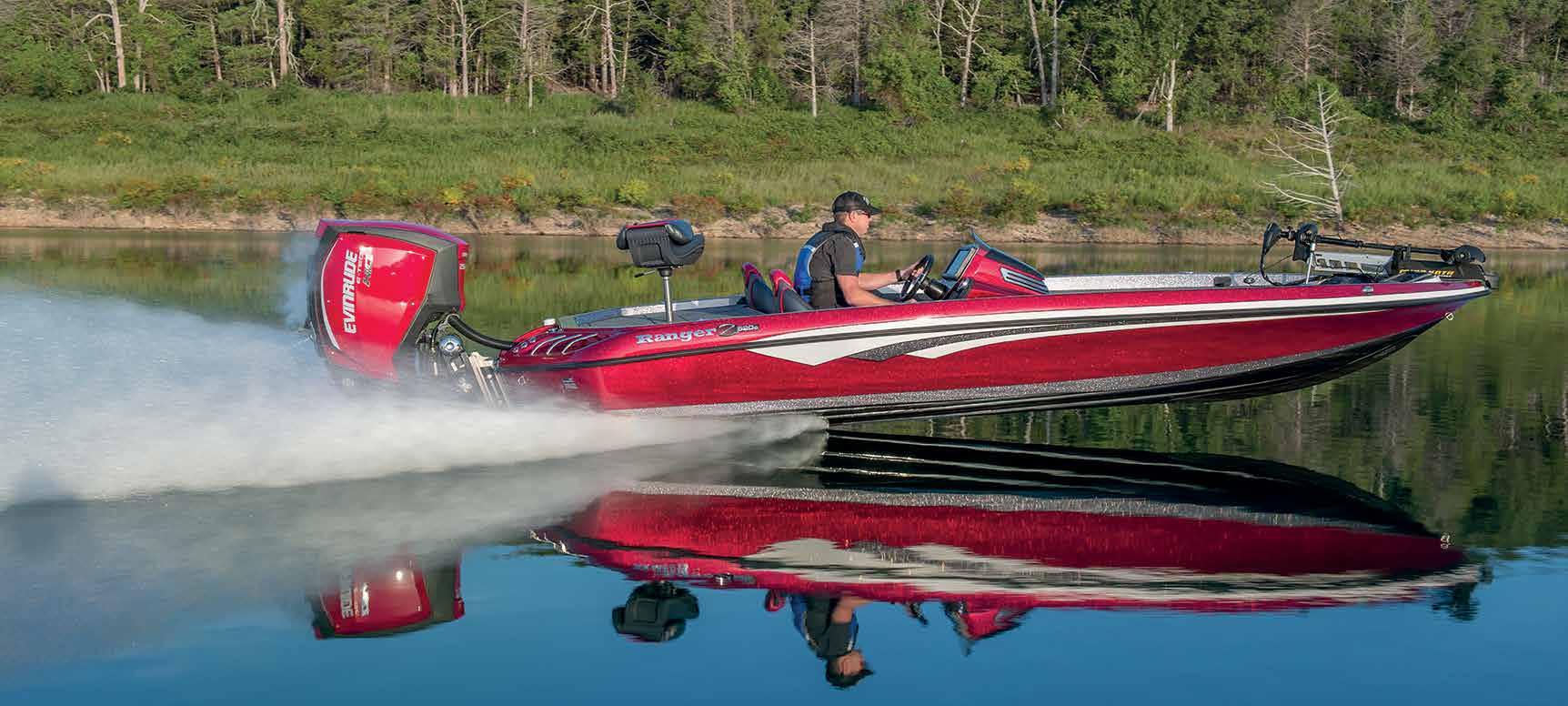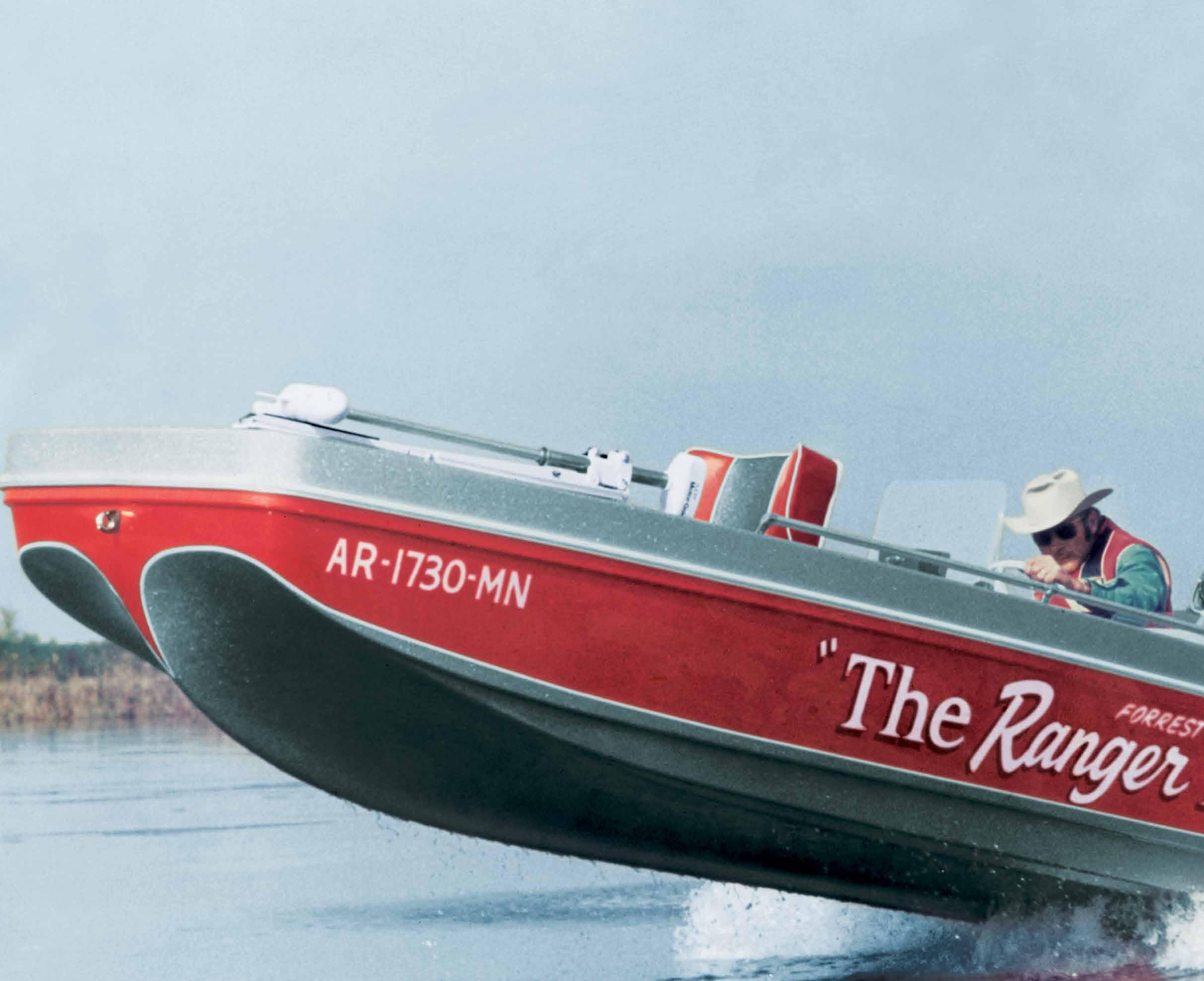
5 minute read
IF YOU BUILD IT:
from Raven Issue No. 25
Arkansas Entrepreneur Pilots
Ranger Boats To Legendary Success
Advertisement
Winter was approaching in Flippin, Arkansas in 1967. Forrest and Nina Wood, who were operating a successful fishing guide service on Bull Shoals Lake, White River and Crooked Creek, were preparing to wind down another season, which meant their employees would be temporarily furloughed until spring.
The off season was a frustrating time for the Woods, who loved spending their days on the water, regardless of the season, and who considered their employees part of the family. But it was during the off season of 1967 when Forrest had a proverbial light bulb moment that would address the couple’s frustrations and change the future of their business for the next four decades.
“Nina and I grew up on the water,” Wood said. “We both share a passion for the peace and tranquility associated with water, and there is perhaps no better place to think than away from land.”
“For that reason, Nina and I spent as much time together on the water as we could. Especially as the off season approached each fall. It was a great time to reflect on the past year and look at ways we could improve our business,” Wood continued.
“As ’67 was coming to a close, we started looking at the idea of building our own boats. We knew first-hand the boats at that time lacked some of the features we were looking for and wondered if we couldn’t keep our guides busy during the winter designing some of our own. The idea grew pretty quickly and by early the following year, we were up and running.”
Guiding from large, heavy, wooden boats, Wood’s long hours and years of guiding along Bull Shoals Lake, which spills into neighboring Missouri and other bodies of water in northern Arkansas, taught him the value of and real need for a design that is comfortable, efficient and, most importantly, demonstrates unquestionable quality. With those merits in mind, he and his wife followed their dream to build quality fishing boats and co-founded Ranger Boats.
“Forrest wanted his boats’ strength, integrity and commitment to be reflected in a single name,” said Matt Raynor, senior marketing manager of Ranger Boats. “A patriot and cowboy at heart, he looked to the legendary reputation of the U.S. Army Rangers and the rugged western heritage of the Texas Rangers. Today, the dream he set in motion proudly carries the hard-earned badge and fierce reputation of ‘Ranger.’”
From the start, Wood’s ideas were straightforward and confident. Napkins, scrap paper and anything to write with were his design templates. Listening closely to anglers and customers was his engineering plan, and his initial designs were so well-accepted by other guides and anglers that the business soon took off in earnest.
The company’s first six boats were built in what is now the City Hall in downtown Flippin, a town of less than 1,500 residents situated in the Ozark Mountains. Demand was strong as 1968 yielded to the last year of the decade. Orders expanded to 600 boats in 1969, the same year the company moved into a new manufacturing facility. A year later, production doubled to 1,200 boats, each selling for $1,000 complete with lights and steering, which were considerable amenities at the time.
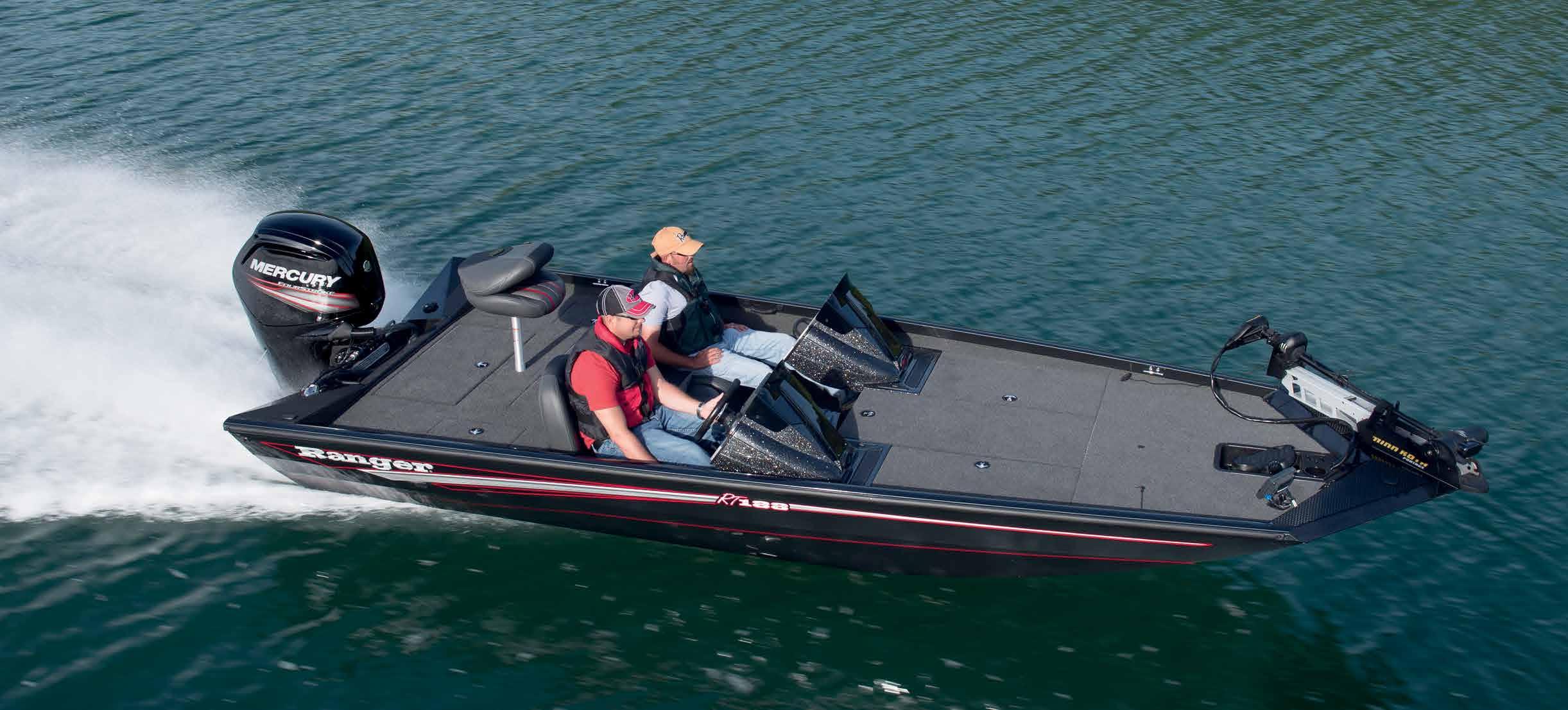
By 1971, the company was firing on all cylinders. Not only had sales doubled, but Ranger Boats was gaining in reputation and stature well beyond the shores of Bull Shoals Lake. Yet just as Ranger was beginning to make a splash beyond Flippin, disaster struck when a fire destroyed the company’s plant and everything inside.
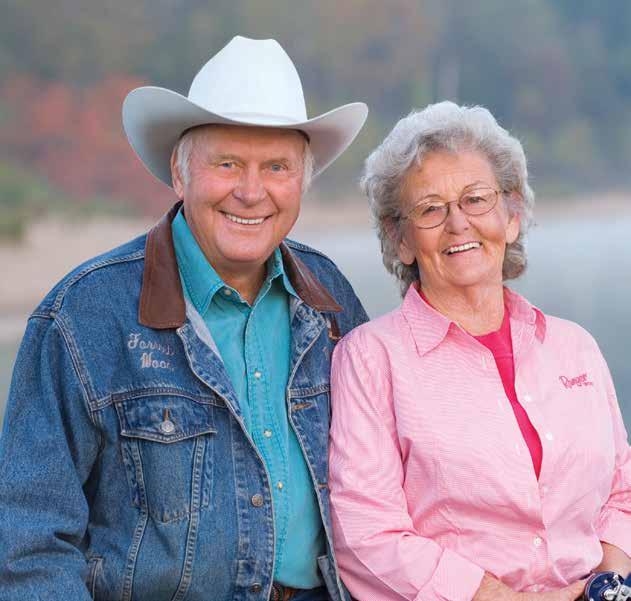
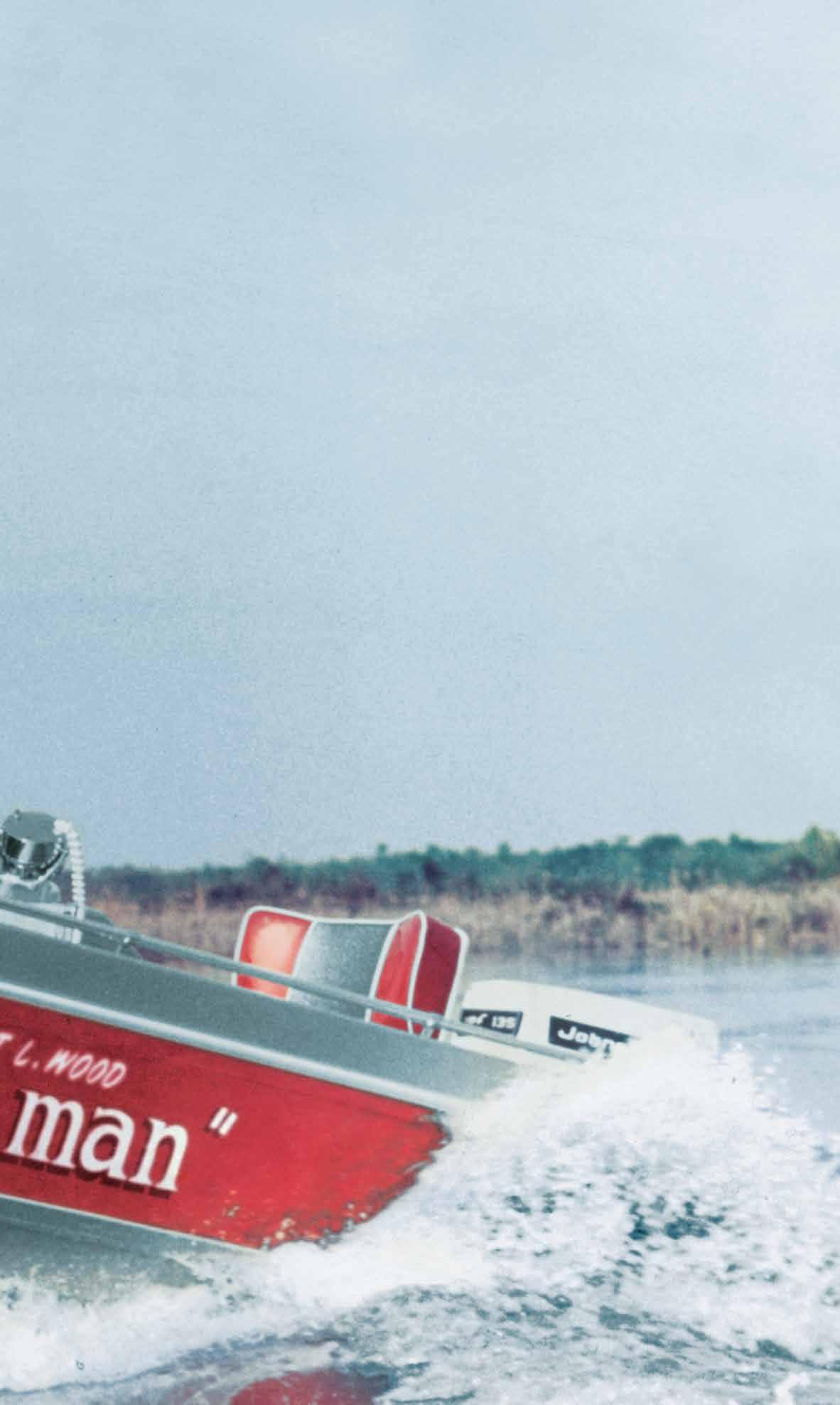
Almost everything, that is.
“All that was salvaged was Forrest’s old army surplus desk containing 40 handwritten boat orders,” Raynor said. “So the following day, with the ashes still warm, Forrest rallied family, friends and employees to help. They cleaned off the charred slab and began working to keep the company afloat. Thanks to their incredible determination and hard work, production was restored within 40 days. It completed a recovery we still look back on today as one of the seminal moments in the history of our company.”
The early 1970s were also when Wood started fishing in competitive bass fishing tournaments that had begun sweeping the nation. His tournament presence and product lines resulted in the rapid expansion of Ranger orders and production. In association with these tournaments, Ranger helped to pioneer the sport of tournament bass fishing.
“Tournament fishing has long had a strong correlation to boat sales,” Raynor said. “A big part of the company’s success can be traced to Forrest’s decision to forge relationships with professional anglers. Forrest is known as the father of the modern bass boat and he almost single-handedly created this industry.”
Today, Ranger Boats, with a little more than 1,000 employees, is the nation’s premier manufacturer of legendary fiberglass and aluminum fishing boats, which include series of bass, multispecies, fish ’n play, waterfowl utility and saltwater boats. The company also builds many of its own accessories, meaning it can still service Ranger boats that have been on the water for 30 years. This turnkey approach to manufacturing is what keeps the company, which is owned by Bass Pro Group, focused on building better vessels.
“Aluminum boats represent our greatest area for long-term growth,” said Raynor, himself an angler. “It’s a very large market, mainly because our customers’ first boat purchase is typically a 16- to 23-foot aluminum fishing boat.” The RT188 Ranger®, for example, is built to be a beginning angler’s dream. Not only is it incredibly affordable, but with such strong attention to detail, this ultra-fishable, all-out fishing machine is built to be in a class by itself.
In terms of fiberglass offerings, the Z520C Ranger® bass boat is designed for anglers with serious tournament experience. Available with a wide range of precision matched outboards, the 20.9-foot boat offers a 250-horsepower engine and a wide range of custom details and comfort features, including custom-fitted premium marine upholstery. Ranger offers Aqualon marine fabrics, a custom-made product line provided by Trivantage®, Glen Raven’s distribution subsidiary, for its boat covers, as well as Sunbrella® fabrics for its seats.
“Trivantage is a great company to work with on new materials,” said Connie Hill, lead designer and upholstery supervisor at Ranger Boats. “They are a true business-building partner— always eager to listen, learn and help develop new lines of material with an eye on future customers.”
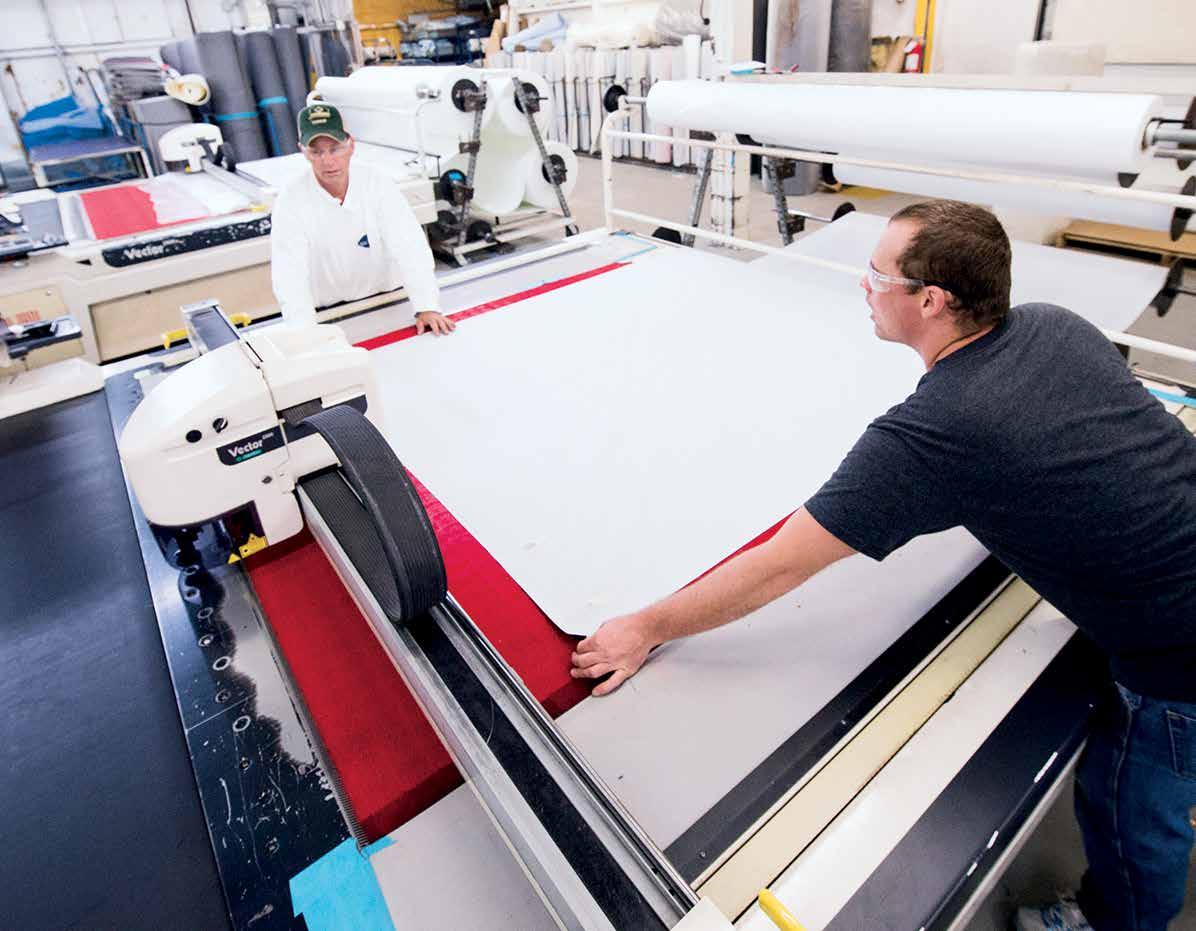
According to Hill, the selection of Sunbrella and Aqualon fabrics has been an important part of Ranger’s brand equity since the early 1980s.
“We select the fabrics because they are highly resistant to UV rays, mildew and water penetration and do not fade,” she said. “Our customers expect nothing but the best on a Ranger boat, and that includes fabric selection.”
With the company nearing its 50th year in business, Raynor said Ranger will continue to rely on partners like Trivantage to help it navigate an industry with 40 million anglers in the United States representing $45 billion in retail sales.
“Ranger Boats’ continued long-term success requires business partners who can keep us focused on the next generation of boating enthusiasts,” Raynor said. “Trivantage is such a partner, and they are committed to helping us build a brand that is synonymous with excellence.”
